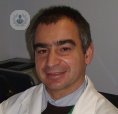Moving articular TAC
Written by:You have a computer as advanced as The Aquilion One improvement has allowed evidence as a non-invasive coronary angiography, but has also served to develop techniques hitherto unknown technical mechanisms by the teams themselves.
One of these new techniques developed in the R + D +, Aquilion One and thanks to the professionalism and dedication of the doctors who form the team, is the TAC articular motion.
This test allows to study the joint instabilities, ie, whether the joints are stable or unstable, through certain movements. This technique consists in acquiring a multi-phase 3D CT and below, take all these phases of the 3 dimensions with some movement, join them in a movie and play in dynamic. That's why we call TAC also in 4 dimensions.
The TAC of 16 and 64 crowns did not allow to perform this exploration because for a volume requires between 3 and 5 seconds, between each of the volumes required more time for the machine to prepare for the next shot.
The Aquilion One can acquire 1 volume in less than 1 second, continuously and without stopping. Thus, as a joint- moves can acquire all volumes, something unthinkable in TACs lower capacity.
This test is very useful for surgeons, since it is clear, with the maximum reliability, if a ligament has instability or not and can intervene surgically in a safe manner.
Formerly the only thing that could make radiographs were forced. The Aquilion One tends, in a more objective way to assess joint instability after making a maneuver that forces to demonstrate whether this joint is unstable or not.
To make it more understandable, when a movement is made, if a joint is stable, there is a good consistency and joint chairs and complement are associated with each other. If there is an instability, joint chairs are not associated either not fitting between them.
Using this technique will get to know and study the biomechanics in movement of joints of the foot, ankle, hand, arm, wrist… That is, you can capture images of moving joints. Thanks to this movement you can study acts as the joint and see where it fails in real conditions.




